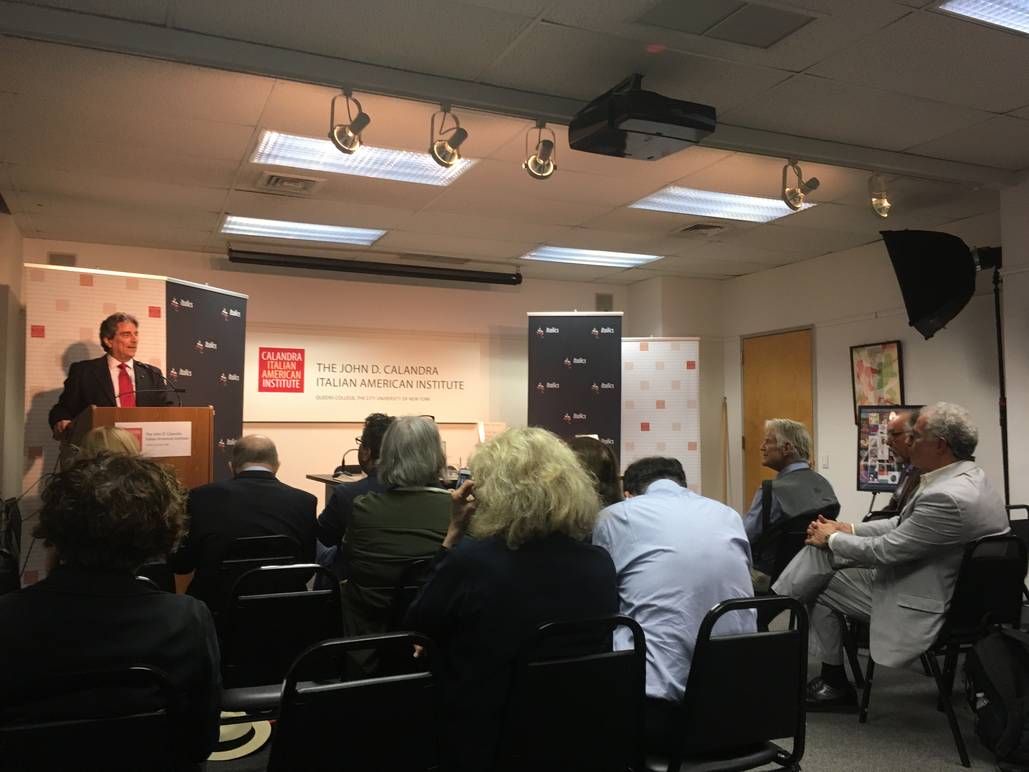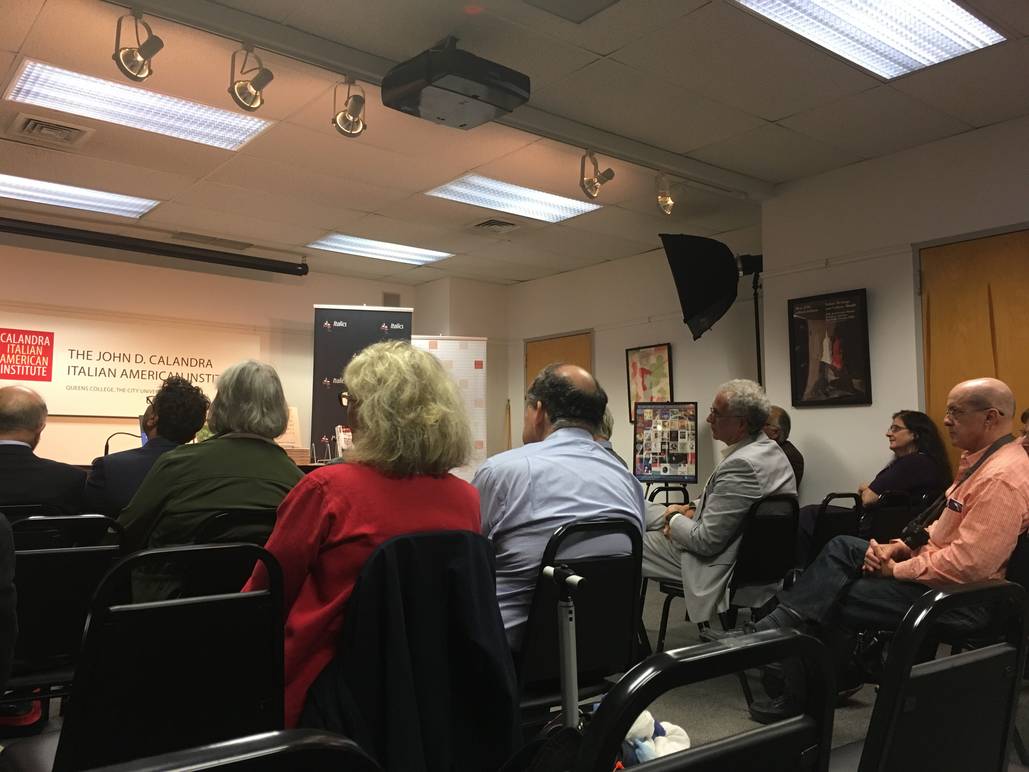Italian-American Writers and the Future
Anthony Tamburri, Dean of the Calandra Institute, began the evening by discussing the importance of what he calls “behavioral philanthropy,” which consists of attending events, going to lectures, readings, and supporting the community. Tamburri spoke about the publishing company that he, Fred Gardaphé, and Paolo Giordano started - Bordighera Press - that is dedicated to Italian and Italian-American culture in North America.
Gardaphé spoke next and discussed the name of the evening’s event Beyond Ellis Island. This name was chosen both as an homage to the book Ellis Island, but also to show how the Italian-American community has grown and become part of the mainstream American society. Gardaphé alluded to the fact that what it means to be Italian American is changing, something that would be discussed in further detail later.
Author Bob Viscusi spoke about his book, Ellis Island. The book is an epic poem, and all of the lines of the poem will fit together in any order. In fact, on the website Ellis Island Poems there is a random sonnet generator that will create a sonnet of 14 lines. The book contains 624 poems, each consisting of 14 lines; this number is significant because 624 x 14 is equal to the number of hours in a calendar year – 8,736 – if the year has 52 weeks.
Maria Lisella was the next to take the stage. Lisella is the sixth winner of Poet Laureate of Queens, and she is the first Italian American to win the honor. During the evening Lisella discussed her experience as an Italian American growing up in Queens. Lisella recounted how her grandparents were not considered entirely “white” upon arrival in the United States; however, Lisella stated that her neighborhood in Jamaica, Queens had minimal racism because of the ethnic diversity in the area. Her essay “Shades, Color, and Internal Dialogues in White America” has been published in the book What Does it Mean to Be White in America?
Mark Rotella described two of his publications regarding the Italian-American experience. Stolen Figs: And Other Adventures in Calabria is a memoir about Rotella’s experiences in Calabria with his father. In his book Amore Rotella recounts stories of Italian-American musicians and the songs that they composed. Rotella stated during the forum that even if some of these musicians didn’t compose their own lyrics, they interpreted them, and their interpretations are important.
Louisa Ermelino described how she grew up in an Italian-American neighborhood, which she found to be both intriguing and stifling; therefore, she had left the Italian-American scene for a while, but she eventually returned to it. Ermelino states that her work reflects the Italian-American experience but also how she escaped it. Ermelino read her short story “Sister-in-Law” during the forum. Her other works include the novels Joey Dee Gets Wise, The Black Madonna, The Sisters Mallone, and Malafemmena.
Mark Ciabattari, unlike many Italian Americans, was not born and raised in New York; Ciabattari’s grew up in Montana, and he later moved to New York. Ciabattari explained that his father was a second generation Italian American, and his mother was Scandinavian. Ciabattari read an excerpt from his book Dreams of an Imaginary New Yorker Named Rizzoli. The protagonist of the book, Rizzoli, is a cross between Ciabattari’s father and his former Italian landlord in Manhattan. Ciabattari enjoys the writing of Luigi Pirandello, especially his work Six Characters in Search of an Author.
The Future of Italian-American Writing
After each author had a chance to speak, the discussion was opened up to the public. The main theme of this discussion had to do with what Italian America will look like in the future. The conclusion is that Italian-American writing may be different, but despite those differences, it will still be just as valid. Given that the future Italian-American writers may be 3rd, 4th, and 5th generation Italian Americans, the paradigm may shift away from writing about immigration and the experience of immigrants. However, regardless of the topic, the experiences and statements of these writers will still be filtered through an Italian-American lens.
A final important point raised was that the Italian-American community needs cohesion. Italian Americana will fade if the Italian-American community is not united in some way. There are other ethnic groups within the United States that have political and social solidarity; the Italian-American community must be unified if it wishes to remain as a presence in the United States. One may ask how the Italian-American community can accomplish this task. Of course, there are no easy answers, but a place to start would be, as Anthony Tamburri said, with “behavioral philanthropy.”








































i-Italy
Facebook
Google+
This work may not be reproduced, in whole or in part, without prior written permission.
Questo lavoro non può essere riprodotto, in tutto o in parte, senza permesso scritto.